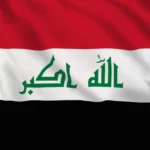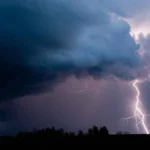
Welcome to our exploration of Mali, a vibrant country in West Africa rich in history, culture, and natural beauty. From its ancient empires that shaped the course of trade and education to its diverse wildlife and culinary traditions, Mali offers a fascinating tapestry of experiences and stories. In this blog, we will delve into 25 intriguing facts that highlight the unique characteristics of Mali, showcasing its contributions to global culture, its breathtaking landscapes, and the resilience of its people. Whether you’re a seasoned traveler, a history enthusiast, or simply curious about this remarkable nation, join us as we uncover the wonders of Mali and celebrate its enduring legacy.
Area: Mali spans approximately 1,240,192 square kilometers, making it the 8th largest country on the African continent. This vast area encompasses a diverse range of landscapes, including the arid Sahara Desert in the north, the Sahel region, and the fertile southern regions along the Niger River. The country’s size and geography contribute to its rich cultural diversity and the variety of ecosystems that support different forms of wildlife and agriculture.
Population: As of 2021, Mali’s population is estimated to be about 20.25 million people. The country has a relatively young demographic, with a significant portion of the population under the age of 25. This youthful population presents both opportunities and challenges, as the country seeks to provide education and employment opportunities to its growing number of young people. The population is spread across urban areas like Bamako, the capital, and rural regions, where traditional lifestyles and agricultural practices prevail.
Capital City: Bamako, the capital of Mali, is situated in the southwestern part of the country along the Niger River. It serves as the political, economic, and cultural hub of Mali. With a population of over 2 million, Bamako is one of the fastest-growing cities in Africa. The city is known for its vibrant markets, lively music scene, and cultural institutions, including museums and art galleries that showcase Mali’s rich heritage. Bamako also plays a crucial role in the country’s transportation and trade networks.
Official Language: French is the official language of Mali, a legacy of the country’s colonial past under French rule until its independence in 1960. While French is used in government, education, and formal communication, there are numerous local languages spoken throughout the country, including Bambara, which is the most widely spoken language. The coexistence of French and local languages reflects Mali’s cultural diversity and the importance of preserving indigenous languages and traditions.
Currency: Mali uses the West African CFA franc (XOF) as its currency. The CFA franc is a regional currency used by several West African countries, which facilitates trade and economic cooperation among member states of the West African Economic and Monetary Union (UEMOA). The currency is pegged to the Euro, providing some stability in exchange rates. The economic landscape of Mali is heavily influenced by agriculture, mining, and trade, with the CFA franc playing a vital role in these sectors.
Independence: Mali achieved independence from France on September 22, 1960, marking a significant milestone in the country’s history. This date is celebrated annually as Mali’s Independence Day, a national holiday that reflects the country’s struggle for self-determination and sovereignty. The path to independence was marked by political movements and negotiations, leading to the establishment of the Republic of Mali. Since independence, the country has experienced various political changes, including periods of military rule and democratic governance.
Highest Point: Hombori Tondo, at 1,155 meters (3,789 feet) above sea level, is the highest point in Mali. Located in the Hombori Mountains in the Mopti Region, this peak is a popular destination for hikers and adventure seekers. The surrounding area is characterized by stunning landscapes, unique rock formations, and a rich diversity of flora and fauna. Hombori Tondo also holds cultural significance for the local communities, who have historical ties to the region and its natural features.
Longest River: The Niger River, which flows through Mali, is approximately 4,180 kilometers (2,600 miles) long, making it the third-longest river in Africa after the Nile and the Congo rivers. The Niger River is a vital waterway for transportation, agriculture, and fishing, supporting the livelihoods of millions of people along its banks. In Mali, the river is particularly important for irrigation, enabling the cultivation of crops in the otherwise arid regions. The river also plays a crucial role in the cultural and economic activities of communities living in its vicinity.
UNESCO World Heritage Sites: Mali is home to three UNESCO World Heritage Sites, each representing significant cultural and historical importance. The Historic City of Timbuktu, known for its ancient mosques and libraries, was a center of learning and trade during the Mali Empire. The Cliff of Bandiagara (Land of the Dogons) showcases the unique architectural and cultural practices of the Dogon people, who have inhabited the region for centuries. The Great Mosque of Djenné, an architectural masterpiece of adobe construction, is one of the largest mud-brick buildings in the world and a symbol of Islamic culture in West Africa.
Timbuktu’s Libraries: Timbuktu is renowned for its historic libraries and manuscripts, with estimates suggesting that there are over 700,000 ancient texts in Timbuktu, some dating back to the 13th century. These manuscripts cover a wide range of subjects, including theology, science, mathematics, and history, reflecting the intellectual and cultural flourishing of the region during the Mali Empire. The libraries of Timbuktu are not only vital for the preservation of African heritage but also serve as a testament to the city’s historical role as a center of learning and scholarship in the Islamic world. Efforts have been made to protect these invaluable texts, especially in recent years, as conflicts and political instability have threatened their preservation. The manuscripts are considered a crucial part of Mali’s cultural identity and continue to attract scholars and researchers from around the globe who seek to study and understand the rich history of the region.
Ethnic Groups: Mali is home to over 15 distinct ethnic groups, with the Bambara being the largest, comprising around 36% of the population. Other significant ethnic groups include the Fulani, Songhai, Tuareg, and Dogon. Each group has its own unique cultural practices, languages, and traditions. This ethnic diversity contributes to the rich tapestry of Mali’s cultural heritage, reflected in its music, art, festivals, and social customs. The coexistence of various ethnic groups has shaped the social dynamics and cultural landscape of the country.
Agriculture: Agriculture is a cornerstone of Mali’s economy, accounting for approximately 30% of the country’s GDP. The fertile regions, particularly along the Niger River, support the cultivation of staple crops such as millet, sorghum, rice, and maize. Cotton is the leading cash crop, making Mali one of the top cotton producers in Africa. The agricultural sector employs a significant portion of the population, particularly in rural areas, where farming practices are often traditional and reliant on seasonal rainfall.
Mali’s Flag: The national flag of Mali features three vertical stripes of green, yellow, and red. Green symbolizes hope and fertility, yellow represents wealth and mineral resources, and red signifies the bloodshed of those who fought for the country’s independence. Adopted on March 1, 1961, the flag reflects the values and aspirations of the Malian people and serves as a symbol of national pride and unity.
Life Expectancy: As of 2021, the life expectancy in Mali was approximately 60 years. This figure is influenced by various factors, including access to healthcare, nutrition, and living conditions. Public health challenges, such as infectious diseases and maternal mortality, have historically impacted life expectancy. Efforts are ongoing to improve healthcare access and quality, which are crucial for enhancing the overall health and longevity of the population.
Literacy Rate: The literacy rate in Mali was estimated to be around 33.1% in 2018. This low literacy rate is attributed to several factors, including limited access to education, particularly in rural areas, and socio-economic challenges. The government and various organizations are working to improve educational opportunities, focusing on increasing enrollment rates and providing adult education programs to enhance literacy levels across the country.
Major Religion: Islam is the predominant religion in Mali, with approximately 95% of the population practicing the faith. The country has a rich Islamic heritage, with many historical mosques and centers of learning, particularly in cities like Timbuktu. The practice of Islam in Mali is often intertwined with local traditions and customs, leading to a unique expression of faith. Religious festivals, such as Eid al-Fitr and Eid al-Adha, are widely celebrated and play a significant role in the social and cultural life of the Malian people.
Bandiagara Escarpment: The Bandiagara Escarpment rises to about 500 meters (1,640 feet) and is located in the Mopti Region of Mali. This UNESCO World Heritage Site is known for its dramatic cliffs, unique geological formations, and rich cultural heritage associated with the Dogon people. The escarpment is dotted with traditional villages that showcase distinctive architecture and cultural practices. The region is also significant for its biodiversity, supporting various plant and animal species.
Malian Music: Mali is renowned for its diverse musical traditions, particularly the genre of Wassoulou, which originates from the southern regions of the country. Malian music is characterized by the use of traditional instruments such as the ngoni (a string instrument) and the kora (a harp-like instrument). Artists like Ali Farka Touré and Oumou Sangaré have gained international acclaim, showcasing Mali’s rich musical heritage. Music plays an essential role in social and cultural gatherings, serving as a medium for storytelling and community expression.
Desert Area: Approximately 65% of Mali is covered by the Sahara Desert, which extends across the northern part of the country. The desert landscape is characterized by vast sand dunes, rocky plateaus, and sparse vegetation. Despite its arid conditions, the Sahara is home to various nomadic communities, such as the Tuareg, who have adapted their lifestyles to thrive in this challenging environment. The desert also presents unique challenges, including water scarcity and climate variability.
Malian Cuisine: Rice is a staple food in Mali, reflecting the agricultural practices and cultural influences of the region. It is often served with a variety of sauces, which can be made from local vegetables such as okra, tomatoes, and onions, as well as meats including chicken, beef, and fish. These dishes are typically seasoned with spices and herbs that enhance their flavor, showcasing the culinary diversity of Malian cuisine. Meals are often communal, served on large platters where family and friends gather to enjoy the food together, emphasizing the importance of community in Malian culture.
Mali’s Wildlife: Mali is home to several national parks, among which the Boucle du Baoulé National Park is prominent, covering an area of 5,500 square kilometers (2,120 square miles). This park is known for its diverse ecosystems, which include savannas, woodlands, and wetlands. The park provides habitat for various wildlife species, including antelopes, monkeys, and numerous bird species, making it a vital area for biodiversity conservation. Additionally, the park plays a role in supporting local communities through eco-tourism, offering opportunities for visitors to experience the natural beauty of Mali while promoting wildlife protection.
Historical Empires: The Mali Empire, which flourished during the 13th and 14th centuries, was one of the richest empires in West Africa. It was renowned for its wealth, particularly in gold, and its strategic position along trans-Saharan trade routes facilitated the exchange of goods, culture, and ideas. The empire’s capital, Timbuktu, became a center of learning and trade, attracting scholars and merchants from across the Islamic world. The legacy of the Mali Empire is still evident today in the region’s cultural practices, architecture, and the historical significance of its cities, which continue to attract researchers and tourists alike.
Malian Diaspora: The Malian diaspora is significant, particularly in France, where over 200,000 Malians are estimated to live. This migration has been driven by various factors, including economic opportunities and educational prospects. The diaspora plays a crucial role in maintaining cultural ties to Mali while also contributing to the economy through remittances sent back home. This community has established vibrant cultural networks that celebrate Malian traditions, music, and cuisine, fostering a sense of identity and belonging among Malians living abroad.
Gold Production: Mali is one of Africa’s largest gold producers, ranking third on the continent after South Africa and Ghana. The country’s gold mining industry has become a key driver of its economy, contributing significantly to national revenue and employment. Major mining companies operate in Mali, extracting gold from both large-scale mines and artisanal operations. The wealth generated from gold production has the potential to support development initiatives, although it also raises challenges related to environmental sustainability and social impacts that need to be managed carefully.
National Animal: The national animal of Mali is the African elephant, symbolizing strength and endurance. Elephants are not only culturally significant but also play a crucial role in the ecosystem as keystone species. They help maintain the structure of the habitats they inhabit by creating pathways through dense vegetation and dispersing seeds. In Mali, elephants are often associated with various cultural narratives and are celebrated in local folklore. However, they face threats from habitat loss and poaching, making conservation efforts essential to ensure their survival in the wild.
Frequently Asked Questions about Mali:
FAQ 1: What is the capital city of Mali?
Answer: The capital city of Mali is Bamako. Located in the southwestern part of the country along the Niger River, Bamako is not only the political and administrative center of Mali but also the largest city in the country. It serves as a cultural and economic hub, with markets, universities, and a vibrant music scene that reflects the diverse traditions of Mali.
FAQ 2: What languages are spoken in Mali?
Answer: The official language of Mali is French, a remnant of its colonial past. However, there are numerous indigenous languages spoken throughout the country, with Bambara being the most widely used as a lingua franca. Other significant languages include Fulfulde, Songhai, Tamasheq, and various other local dialects, reflecting the country’s rich cultural diversity.
FAQ 3: What are some traditional dishes in Malian cuisine?
Answer: Malian cuisine is diverse and flavorful, featuring staples such as rice, millet, and sorghum. Traditional dishes often include Jollof rice, a one-pot dish cooked with tomatoes and spices, and Tiguadege Na, a peanut butter stew typically served with rice. Fried plantains and fufu, a starchy side dish, are also popular. Meals are often accompanied by spicy sauces made from vegetables and meats, showcasing the vibrant flavors of the region.
FAQ 4: What is the significance of Timbuktu in Mali?
Answer: Timbuktu is a historic city in Mali that was once a prominent center of trade, culture, and scholarship during the Mali Empire in the 13th and 14th centuries. It became famous for its universities and libraries, attracting scholars and traders from across the Islamic world. Today, Timbuktu is recognized as a UNESCO World Heritage site, celebrated for its ancient architecture, including the iconic mosques and mud-brick structures that reflect the city’s historical significance.
FAQ 5: What are Mali’s major natural attractions?
Answer: Mali is home to a variety of natural attractions, including the Niger River, which is vital for transportation and agriculture. The Bandiagara Escarpment, a UNESCO World Heritage site, features stunning cliff formations and traditional Dogon villages known for their unique culture and architecture. Additionally, Boucle du Baoulé National Park offers opportunities for wildlife viewing, with diverse ecosystems that support various species, including elephants and antelopes.
FAQ 6: What are the main economic activities in Mali?
Answer: Mali’s economy is primarily based on agriculture, with crops such as cotton, millet, and rice being significant contributors. The country is also one of Africa’s largest gold producers, which plays a crucial role in its economy. Livestock farming and fishing are other important economic activities. Additionally, Mali has a growing artisan sector, producing traditional crafts, textiles, and jewelry that reflect its rich cultural heritage.
FAQ 7: What are the current challenges facing Mali?
Answer: Mali faces several challenges, including political instability, security concerns, and economic difficulties. The country has experienced coups and conflicts, particularly in the northern regions, which have affected governance and development. Additionally, issues such as food insecurity, poverty, and climate change pose significant challenges to the well-being of its population. Efforts are ongoing to promote peace, stability, and sustainable development in the region.
FAQ 8: How can I travel to Mali?
Answer: Traveling to Mali typically involves flying into Bamako, which is served by several international airlines. Visitors should check visa requirements before traveling, as most travelers will need a visa to enter the country. It is important to stay informed about the current security situation and health advisories, as conditions can change. Travelers are encouraged to connect with local tour operators for guided experiences and to explore the rich cultural and natural attractions Mali has to offer.
FAQ 9: What is the climate like in Mali?
Answer: Mali has a predominantly hot and dry climate, characterized by a tropical savanna climate in the south and a desert climate in the north. The rainy season typically occurs from June to September, bringing much-needed precipitation to the agricultural regions. Temperatures can vary significantly, with hot days and cooler nights, especially in the northern desert areas. The best time to visit is during the cooler months from November to February, when temperatures are more moderate.
FAQ 10: What cultural practices are unique to Mali?
Answer: Mali is known for its rich cultural traditions, including music, dance, and storytelling. The country has a vibrant music scene, with genres such as Malian blues and traditional griot music, which are integral to social and cultural events. Festivals, such as the Festival in the Desert, celebrate the
continue
cultural heritage of Mali, showcasing traditional music, dance, and art. Additionally, storytelling is an important aspect of Malian culture, with griots (traditional storytellers and musicians) preserving history and folklore through oral traditions. The country is also known for its craftsmanship, including intricate textiles, pottery, and jewelry, reflecting the diverse ethnic groups and their unique artistic expressions.
FAQ 11: What are the main ethnic groups in Mali?
Answer: Mali is home to a diverse range of ethnic groups, each contributing to the country’s rich cultural tapestry. The largest group is the Bambara, followed by the Fulani, Tuareg, Songhai, Dogon, and Malinke, among others. Each ethnic group has its own language, customs, and traditions, which are celebrated through festivals, music, and art. This diversity is a significant aspect of Mali’s identity, fostering a sense of community and cultural exchange among the various groups.
FAQ 12: What is the education system like in Mali?
Answer: The education system in Mali has made progress in recent years, but challenges remain. Primary education is officially free and compulsory, although access can be limited, especially in rural areas. The literacy rate is improving, but it still lags behind global averages. Secondary and higher education institutions, including universities in Bamako and Timbuktu, play a vital role in shaping the future of the country’s youth. Efforts are ongoing to enhance educational infrastructure and improve the quality of education to better serve the population.
FAQ 13: How does Mali celebrate its independence?
Answer: Mali celebrates its independence on September 22 each year, marking the date in 1960 when it gained independence from France. The day is commemorated with various festivities, including parades, cultural performances, and speeches highlighting national pride and unity. Events often take place in major cities, especially in Bamako, where citizens gather to celebrate their heritage and reflect on the country’s journey since independence.
FAQ 14: What are some popular tourist attractions in Mali?
Answer: Mali boasts several popular tourist attractions that highlight its historical and cultural significance. Notable sites include Timbuktu, with its ancient mosques and libraries; the Bandiagara Escarpment, known for its stunning landscapes and traditional Dogon villages; and the vibrant markets of Bamako, where visitors can experience local life and shop for crafts. The Niger River also offers opportunities for boat tours and fishing, allowing travelers to appreciate the natural beauty of the region.
FAQ 15: Is Mali safe for tourists?
Answer: Safety in Mali can vary depending on the region and current events. While some areas, particularly in the south, may be relatively safe for tourists, northern regions have experienced conflict and instability. Travelers are advised to stay informed about the security situation, follow travel advisories from their governments, and exercise caution. It is recommended to travel with reputable tour operators and avoid areas with known security risks to ensure a safe and enjoyable visit.
FAQ 16: What role does music play in Malian culture?
Answer: Music is a vital part of Malian culture, serving as a means of expression, storytelling, and community bonding. Traditional music often features instruments such as the kora (a stringed instrument), balafon (a wooden percussion instrument), and various drums. Genres like Malian blues and traditional griot music are popular, with artists like Ali Farka Touré and Salif Keita gaining international recognition. Music is often performed at cultural events, celebrations, and festivals, reflecting the rich heritage and contemporary influences of Mali.
FAQ 17: What are the traditional clothing styles in Mali?
Answer: Traditional clothing in Mali varies among ethnic groups and is often characterized by vibrant colors and intricate patterns. Men typically wear boubous, which are loose-fitting robes, while women often wear pagnes, colorful cloth wrapped around the body. The boubou for women may be adorned with elaborate embroidery and paired with headscarves. Clothing styles often reflect cultural identity and are worn during festivals, ceremonies, and daily life, showcasing the artistry and craftsmanship of local textile makers.
FAQ 18: How does Mali manage its natural resources?
Answer: Mali’s management of natural resources, particularly in agriculture and mining, is crucial for its economy. The government has implemented policies aimed at sustainable resource management to balance economic growth with environmental protection. However, challenges such as land degradation, deforestation, and water scarcity persist. Efforts are underway to promote sustainable agricultural practices, improve water management, and regulate mining activities to ensure that natural resources benefit the population while preserving the environment.








